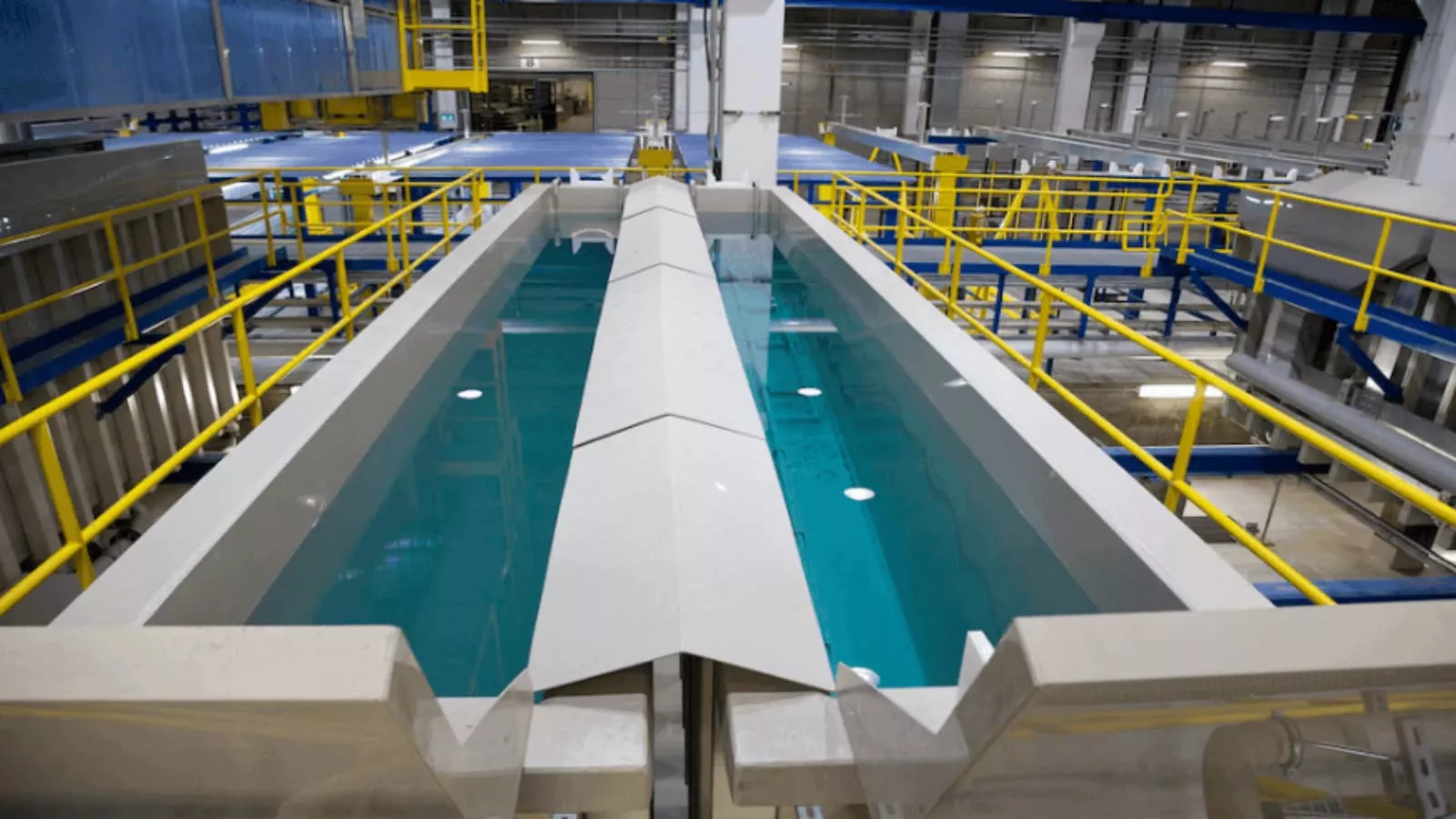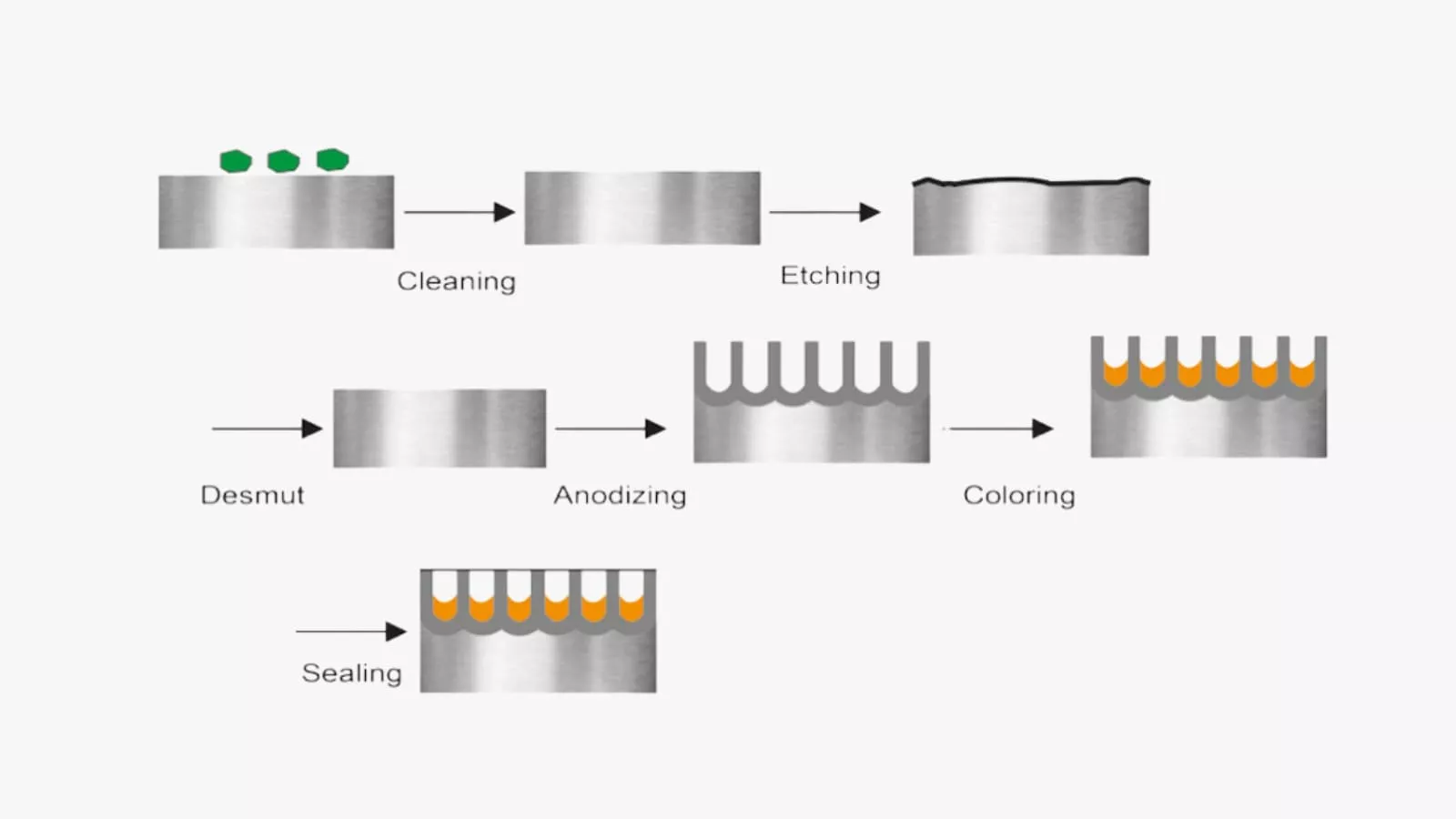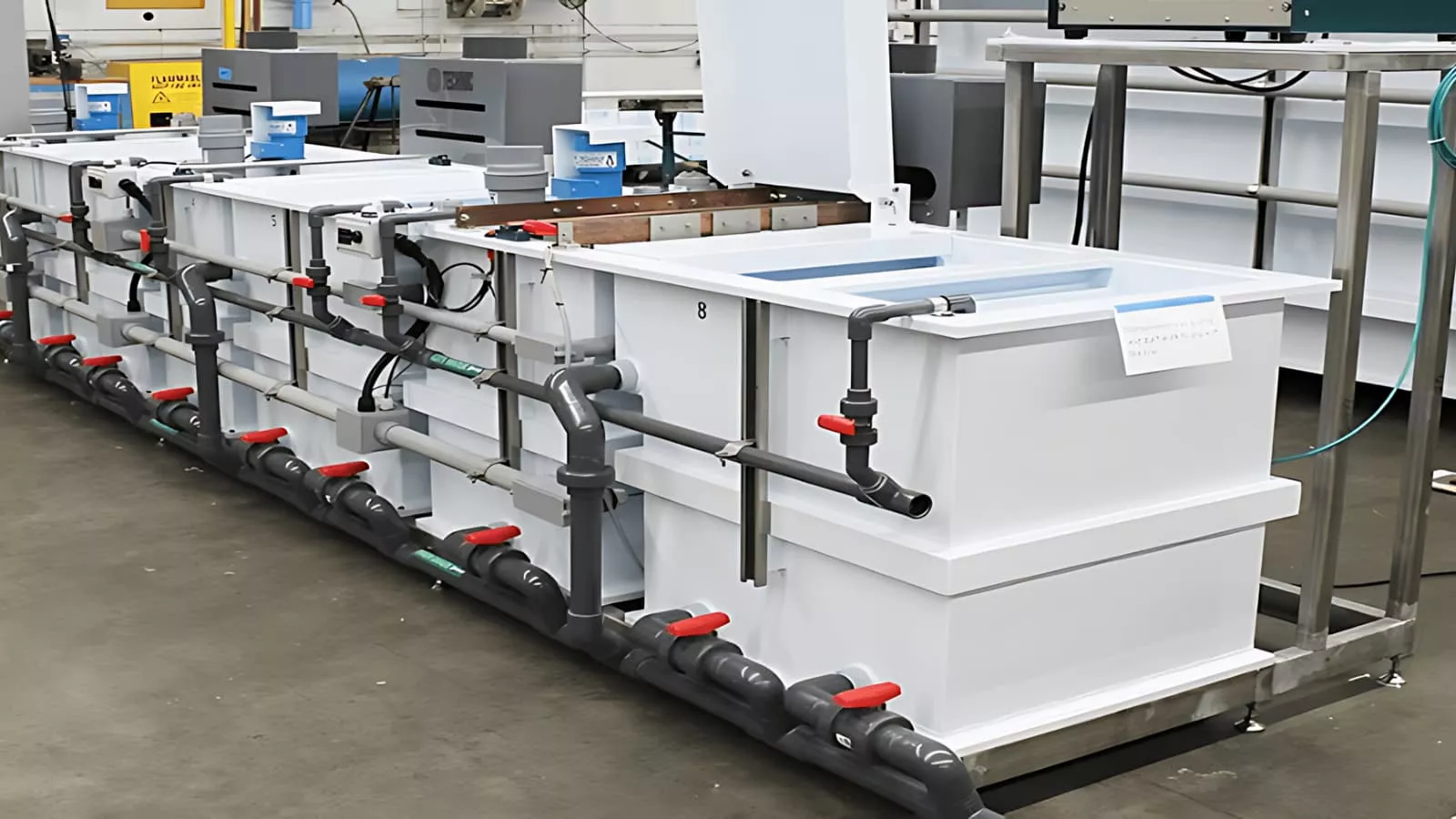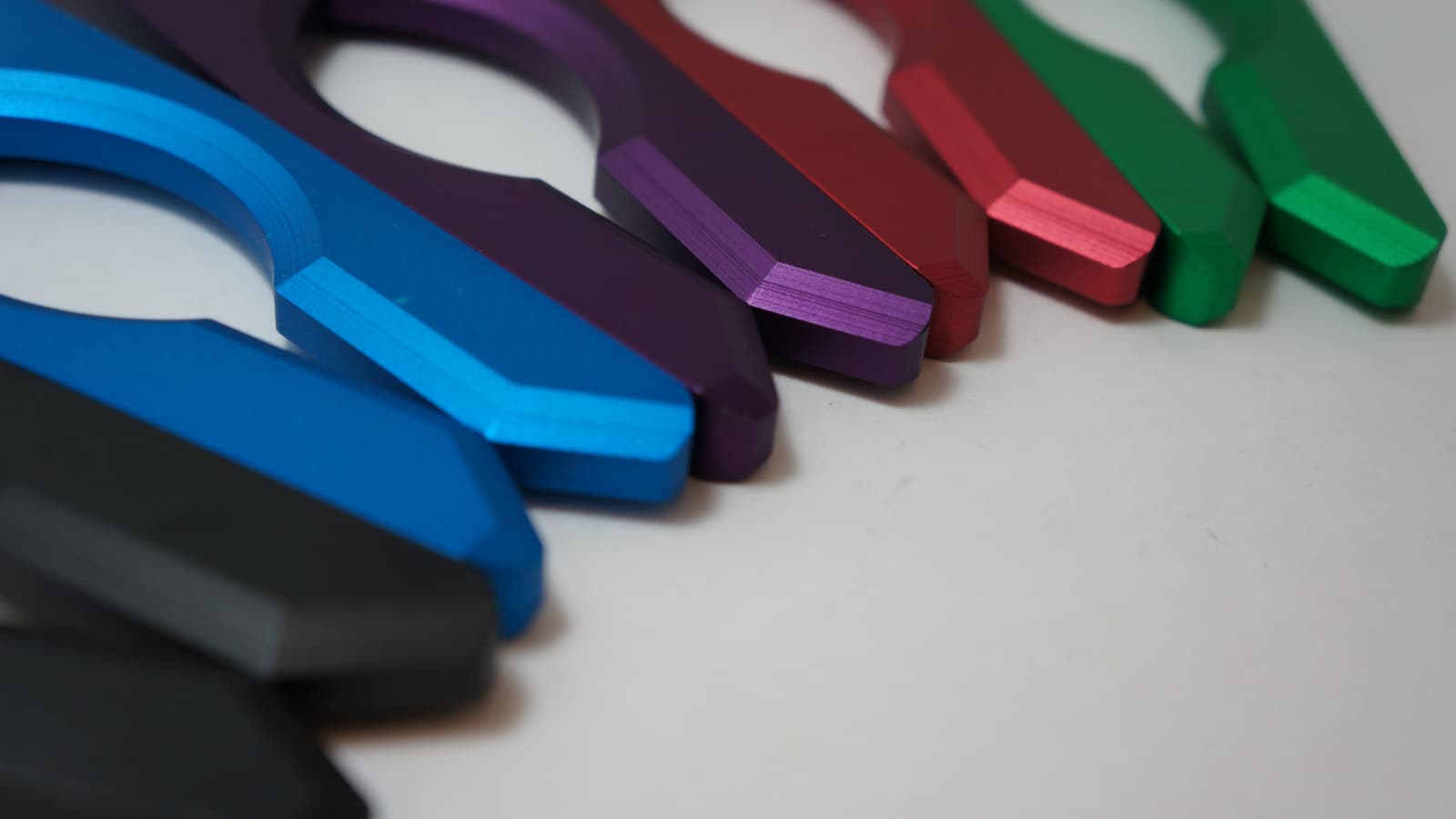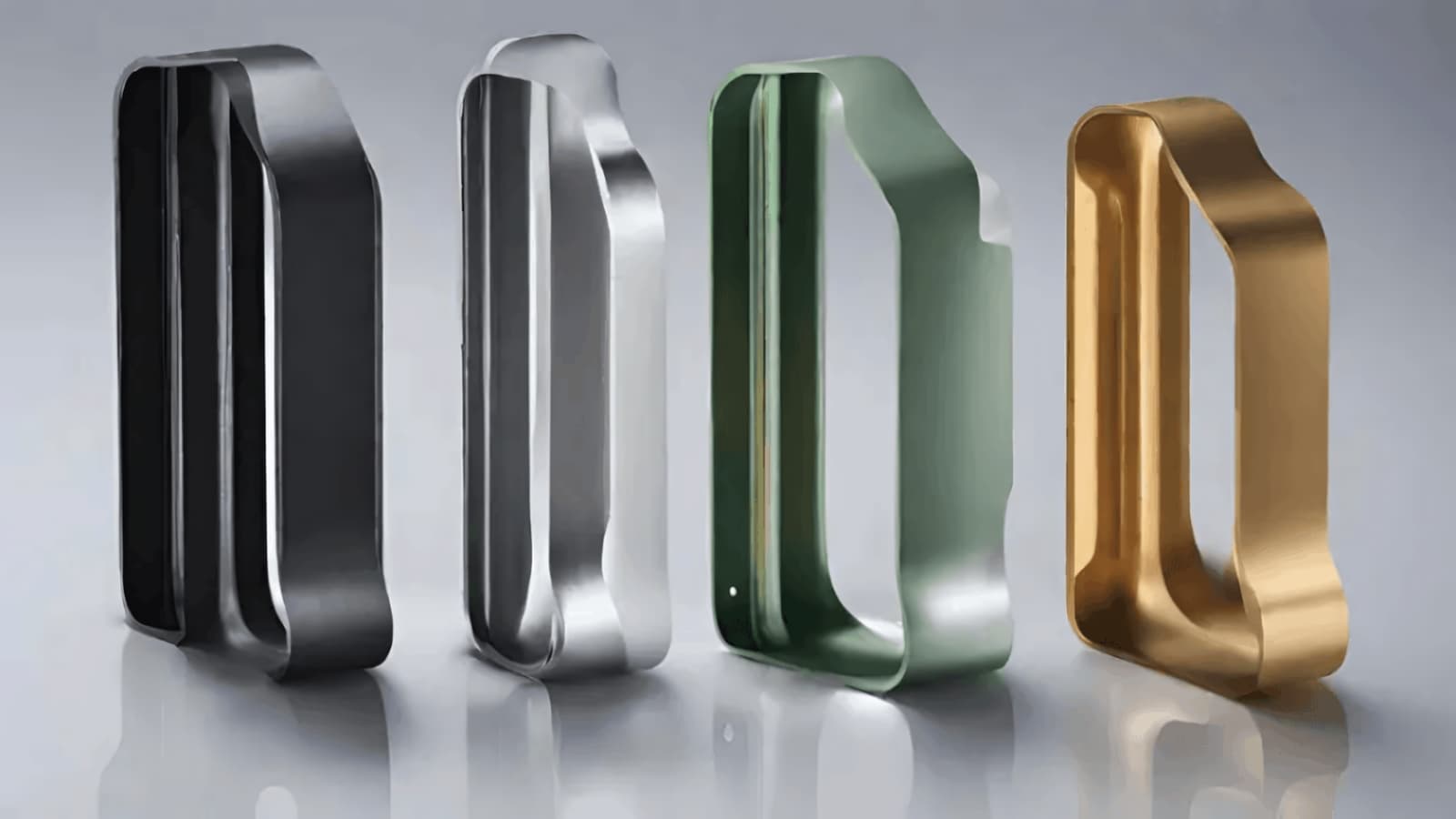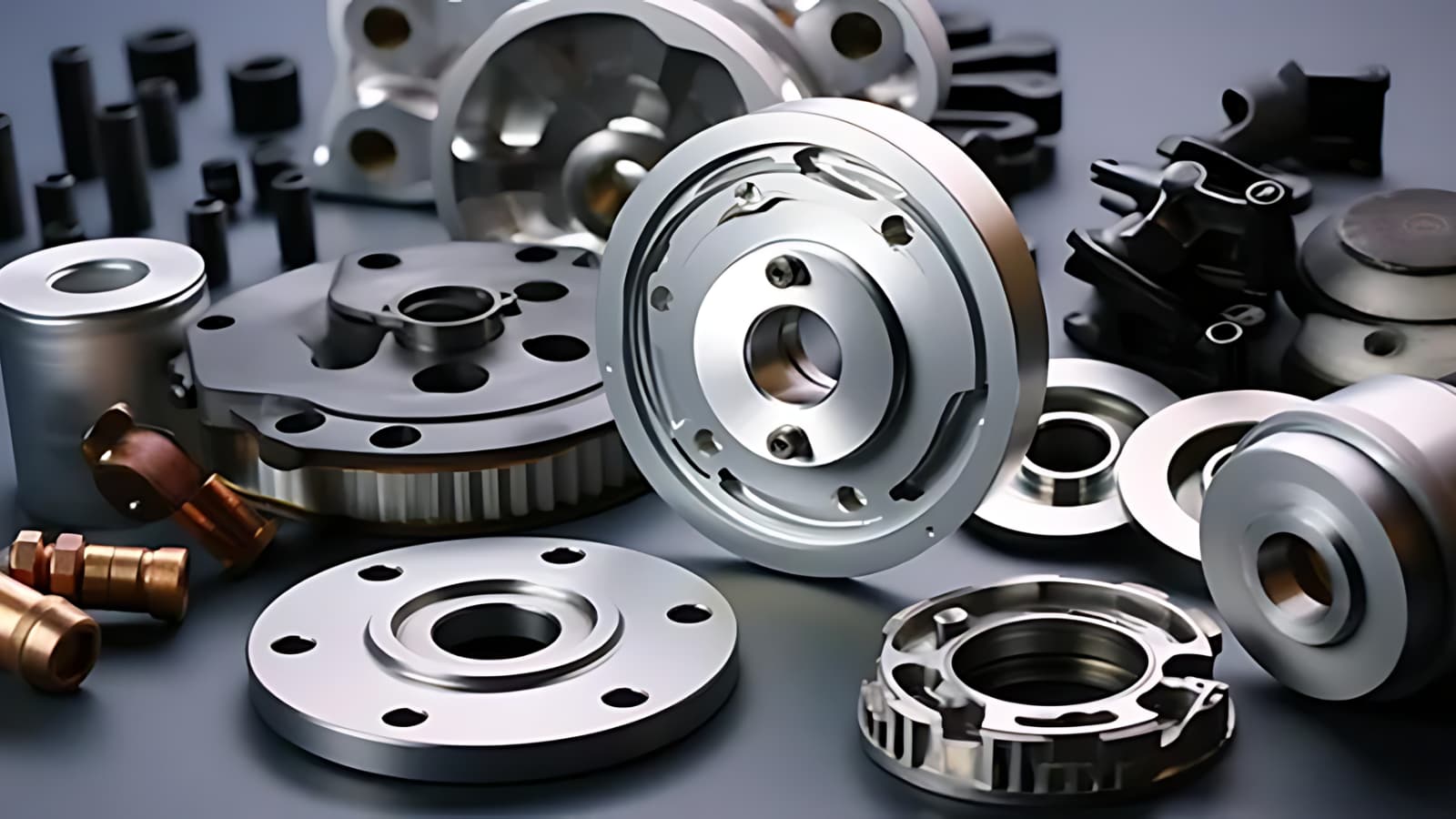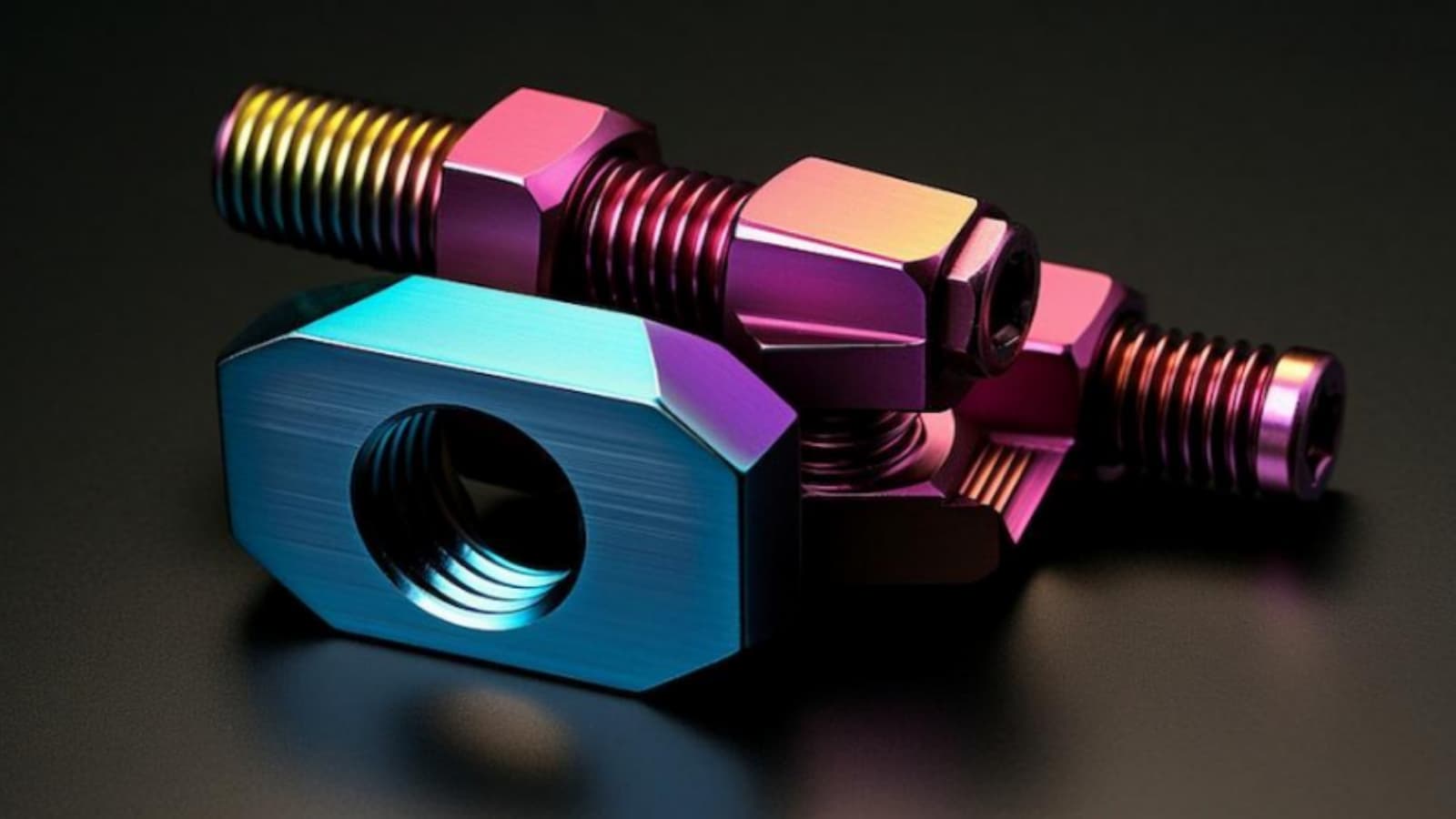|
Anodizing is a type of surface finish known for enhancing sturdiness, corrosion resistance, wear resistance, and the aesthetic of non-ferrous parts, typically aluminum, and its alloys. It involves creating a thin protective oxide layer on the substrate surface with an electrochemical process. Uses of the anodizing method are widespread across industries due to its versatility. You can coat the protective layer with the desired thickness and colors. Meanwhile, it can achieve a smooth and uniform finish, with a roughness value (Ra) as low as 0.5µm. This article will guide you through the nuances of anodizing surface finish, its process, types, properties, color options, benefits, applications, etc. What’s Anodizing?
It is a type of surface treatment method used in manufacturing to enhance the corrosion resistance and surface strength of non-ferrous parts and products. The anodizing process uses an electrolysis mechanism to create an oxide layer of substrate material. You might wonder how it differs from an electroplating finish. Electroplating deposits a layer of secondary material on the substrate surface. For example, coating zinc on aluminum. Meanwhile, the anodizing finish does not apply any additional material as a coating layer. Instead, it develops an anodic oxide layer integral to the metal surface. It means the parts to be anodized itself act as anode during the anodization. The thickness of the anodized layer can range from 0.5- 150 µm. However, it increases over time as it operates in humid or harsh environmental conditions due to further oxidation. Subsequently, the particular thickness level also depends on which type of anodizing you are applying, Type I, Type II, or Type III. How Does Anodizing Work?
As previously said, the working principle of the anodizing process is based on the electrolysis process. The substrate (e.g. aluminum) is connected to the positive terminal and acts as the anode. On the other hand, highly conductive materials are used as cathode (negative terminal). For example, aluminum or stainless steel are suitable cathode options for aluminum anodizing. Consequently, H₂SO₄ (15-20% by weight), CrO₃(3-10%)H₃PO₄ (5-10% ) are the common electrolytes for the process. Once the power supply is on, the anode undergoes for oxidation reaction (loses the electrons) and the metal ion further reacts with oxygen ions to form the oxide layer. Furthermore, the anodizing process steps below chronologically brief how it works; Preparation and CleaningFirst, a uniform and smooth surface is essential to apply the anodized layer. You can achieve it by mechanical treatments and chemical cleaning. Mechanical surface treatment techniques like sanding, bead blasting, grinding, and polishing remove the surface irregularities and defects. Whereas, alkaline or acidic cleaning removes grease, oils, dirt, and any other contaminants, followed by rinsing in deionized water to remove the residual cleaning agents. Consequently, the etching can be cleaned further to peel a thin surface layer and create a uniform matte finish. Electrochemical ProcessNext, the parts to be anodized ( let’s say metal “M”) become the anode and other high-conductive metal is the cathode, both immersed in the electrolytic bath. When electricity flows through this electrolysis setup anode oxidizes and loses electrons. Oxidation; Metal (M)→ M ³⁺ Next, the metal ion reacts with the oxygen ions migrating towards it due to its positive charge. Here, O²⁻ comes from disassociations of electrolytic solution. the anode where they react with the metal ions, resulting in a solid metal oxide layer. 2M³⁺ + 3O²⁻ → M₂O₃ (S, Metal Oxide) For Example, the actual reactions are; Al (s) → Al³⁺ + 3e⁻ H₃PO₄ → 3H⁺ + PO₄³⁻ 3 and 2H₂O → O₂ + 4H⁺ + 4e⁻ 2Al³⁺ + 3O²⁻ → Al₂O₃ (s) Anodizing Bath and ReactionSulphuric, chromic, phosphoric, and other anodization baths can accommodate dies to give the desired color appearance. The common methods to apply colors in anodized components are as follows; Dyeing: The porous layer absorbs dyes, various colors are possible by immersing the part in a dye bath. Electrolytic Coloring: Metal salts are electrochemically deposited into the layer’s pores, resulting in durable and fade-resistant colors. Integral Coloring: Direct incorporation of color into the oxide layer. Typically, it produces darker shades like bronze or black. Sealing MethodsWe just say that the anodization process acquires dyes on surface pores. Here, sealing is essential to avoid the risk of corrosion, scratches, and stain formation due to these pores. If the sealing is poor or absent, the porous metal oxide layer accumulates dust and debris. You can seal the anodized surface using distinct techniques, cold sealing, mid-temperature sealing, and hot sealing. Sealing Method Process Bath/Solution ResultCold Sealing Immersion of parts in solution containing nickel-fluoride at room temperature Nickel-fluoride(NiF₂) A sealed layer of fluoro-aluminate Mid-Temperature Sealing Immersion in a solution of metal salts (60-80°C). Nickel acetate, magnesium salts, cobalt salts Seals pores with metal salts Ho Sealing Immersion in near-boiling deionized water (95-100°C) Deionized water Pores swell and close, forming a dense layer Technical Considerations in Anodizing Technical considerations refer to anodizing equipment and processing parameters related to considerations, from the anodization tank to PH level to filtration. Some common considerations are as follow. Anodizing Tank Setup
The tank is responsible for the complete electrolysis process, it is where the substrate and cathode are immersed in the bath. It is typically made with chemical-resistant materials like polypropylene, PVC, or coated stainless steel. For holding the anode, the tank includes a rack mechanism, further connected to the electrical busbar for a uniform and controlled power supply. On the other hand, a separate fixture holds the cathode and is also connected to the busbar. There are different factors you need to consider during the anodizing tank setup; size of the tank, busbar capacity and its secure connection with the rack, cathode to anode area ratio( 1:1 or 1:3), filtration for electrolyte impurities, etc. Control of Acidic SolutionsThetemperature and concentration of acidic solutions directly impact the thickness and quality of the anodized finish. The high acidic concentration might lead to faster layer growth but can cause rougher surfaces or burns. Therefore, you need to monitor the PH level of the solutions. If any changes happen, you can add buffer or neutralization solutions based on the standard PH value set for the process. Managing Anodizing Layers and ThicknessThe anodizing layer forms when oxygen ions from the electrolyte migrate to the metal surface and react with the metal atoms. Therefore, the layer growth and thickness fundamentally depend on the factor that affects the concentration of metallic and oxygen ions. For example, temperature, current density, time, acidic concentration, etc. So you must set all the processing parameters considering your thickness requirement and other surface finish characteristics. Anodization Bath MaintenanceOver the time of anodization, the bath solution starts to accumulate impurities like metal salt residues and dissolved chemicals. Additionally, the metal ion concentration also tends to increase above standard level(<20 g/L is preferred). These impurities affect the process efficiency and overall quality. Therefore, it is essential to filter the impurities and maintain the PH level, proper agitation, and ion concentration. Types of AnodizingThere are four types of anodizing processes based on the acid bath type and thickness capabilities. These are termed as; Type I, Type II, Type II, and phosphoric acid anodizing. Chromic Acid Anodize (Type I)Type I or chromic acid anodize is ideal if you need thin layers, especially for decorative and a few functional purposes. However, it can mimic the performance of type II or hard coat after sealing. Meanwhile, the thickness of the layer ranges from 0.00002”- 0.0001”. Sulfuric Acid Anodize (Type II)It is the most common type, which uses sulphuric acid as the electrochemical medium to build the oxide layer. Sulphuric acid anodize uses a solution of 15-20% concentration. It develops a thicker layer than type I and has widespread uses. The thickness can range from 0.0001 “-0.001”. Additionally, Type II anodization offers high corrosion and wear resistance along with numerous color options. Hard Anodize (Type III)Type III is the most dense and strong type, suitable for thicker layers of oxides on the surface. Consequently, it is ideal for harsh and chemical environments. The thickness can vary from 0.0005″ to 0.006″. The use of hard anodizing mainly includes high-performance and low-friction parts. The hard anodization method can use chromic, sulphuric, or oxalic acids as electrolytes Phosphoric Acid AnodizeIt is primarily a surface preparation rather than a full-scale corrosion or wear-resistant finish. Phosphoric acid anodize uses a phosphoric acid solution with a concentration of 15-30%. Unlike other types, it creates a very thin and porous oxide layer(< 0.0001”). It can be ideal for applying further adhesives or primers. The table below summarizes above four types of anodization; Anodizing Types Thickness Color Adaptability When to Use? Application ExamplesChromic Acid Anodize (Type I) 0.00002”- 0.0001” Limited color options (typically grey or dark grey) If small thickness and fatigue strength are required. Aircraft components, military equipment, precision instruments, etc. Sulfuric Acid Anodize (Type II) 0.0001 “-0.001” Almost any color can be achieved through dyeing General-purpose anodizing where both aesthetic and functional properties are needed. Consumer electronics, automotive parts, building facades, and kitchenware. Hard Anodize (Type III) 0.0005″ to 0.006″ Limited to darker shades (grey to black) Heavy-duty applications that require high wear and corrosion resistance Hydraulic cylinders, military vehicles, marine hardware, etc. Phosphoric Acid Anodize (< 0.0001”). Limited, more of a surface preparation Use as a primer for coating or paints. Aircraft structural bonding, the primer for coatings, etc. Anodized Finished and Their Properties
The anodized surface might have a distinct appearance and properties based on the type of electrolyte and other process parameters. Clear, bright, brushed, and dyed are some specific ones. Each of these anodized finishes offers a specific appearance and properties. The table below highlights their characteristics; Anodizing Finishes Description AppearanceClear Anodizing Clear anodizing is used for parts where a natural, metallic look is desired. Thickness typically ranges from Transparent, means natural aluminum color Dyed Anodizing It involves clear anodizing followed by immersion in dye Based on the applied dye color Hard Anodizing A harder, thicker, and more wear-resistant than standard anodizing. Darker in color (often gray or black) Bright Anodizing It involves polishing the surface before anodizing to achieve a bright and shiny finish. High-gloss and reflective finish. Brushed Anodizing Aluminum is brushed before anodizing for a textured look. Matte finishes with a directional grain pattern. Achieving Different Anodized Colors As previously said theanodizing contains pores on the surface, which are perfect for absorbing dyes of various colors. Meanwhile, these pores can be sealed after the coloring to make them durable. Another thing is that the type of metal or alloy, electrolytic solution, current and voltage setup, and thickness also influence the aluminum anodized colors ( colors without applying the dyes). The dyeing process utilizes a water solution of 0.025 to 1 % of dyestuffs at a temperature of 150°F. Source. So, you should add the corresponding dye in this solution and let parts absorb that in pores. On the other hand, another way to achieve anodized color is electrolytic coloring ( adding specific salts to electrolytes). Color Dye Immersion Method Electrolytic ColoringClear/Natural Anodizing without dyes N/A Black Immersion in black dye High current density with various salts Gold Immersion in yellow dye Metal salts (Nickel) Red Immersion in red dye N/A Blue Immersion in blue dye N/A Green Immersion in green dye N/A Bronze N/A Metal salts (Tin/Nickel) Purple Immersion in purple dye N/A Custom Colors Blending of specific dyes N/A Benefits of Anodizing Whether they are aluminum, magnesium, zinc, titanium, or other any compatible material, an anodized finish creates a hard coat on their surface. Besides this, anodizing has other benefits related to process, speed, cost, and environmental concerns. Here are the key benefits of anodizing; Corrosion ResistanceWhen a thin film of oxide layer reacts with environmental moisture, it further increases the layer thickness. As a result, anodizing parts are highly resistant to corrosion, and they also protect their substrate from UV rays, thermal damage, and the marine environment. Enhanced Surface FinishingAlong with protection, it also enhances the aesthetic properties of the substrate surface. Anodized surface finish can achieve almost every surface texture, from matte to high gloss. Consequently, countless color options and customization are also possible. Meanwhile, the appearance lasts over a long period without fading. Furthermore, this finish can be applied to any complex and intricate components or products. Improved Electrical ConductivityThe Anodization does not improve the electrical conductivity! It provides the insulation. The oxide layers ( especially in anodized aluminum) can provide electrical insulation to components, whereas the inner metal still maintains its electrical conductivity. However, you can also retain some degree of conductivity on the surface by controlling the film thickness. Durability and LongevityThe anodizing finish is a hard oxide coating that enhances the hardness, wear abrasion, and corrosion. It covers all sharp corner angles, edges, and intricate areas. Unlike other coating, you don’t have the risk of adhesion failure also. All these reasons increase the lifespan of anodized coating, and so the longevity of the underlying part. Applications of Anodized MetalsThe anodizing process is widely applicable to aluminum, zinc, magnesium, titanium, and other non-ferrous metals and alloys. It can finish these materials no matter how they are manufactured, CNC machining, sheet metal, extrusion, or any other method. Let’s discuss the applications of anodized metals with specific examples across industries. Anodized Aluminum
You can anodize 1000 to 7000 series aluminum alloys( except 3 and 4000 series). The aluminum anodizing develops an oxide layer on the surface of components not only giving them custom color and aesthetics, but also improving their resistance against corrosion, wear, and scratches. The following are some application examples; ● Automotive components, such as wheel covers, fuel caps, engine covers, trim parts, and control panels. ● Lightweight aerospace parts like skin panels, structural components, fasteners, interior cabin items, etc. ● Home appliances and kitchenware items. ● Electronic and electrical enclosures. ● Medical equipment housing, scalpel handles, sterilization tray handles, etc. Anodized Magnesium
Magnesium is one of the light metals, offering an exceptional strength-to-weight ratio. Anodizing is an ideal primer for magnesium if further coatings are necessary. Meanwhile, hard anodized coatings (followed by sealing)ling can make the magnesium parts corrosion-resistant. Application examples; ● Bicycle frame components ● Vehicle battery housing ● High-performance tools and hardware ● Drone, satellite, and aircraft components Anodized Zinc
Zinc is itself wear and corrosion-resistant, anodization treatment further increases these properties and lifespan of manufactured parts. The anodized zinc surface contains phosphate and chromates in its oxide layer. Application examples; ● Automotive fasteners, anodized screws for aircraft, fuel system parts, and other small machinery components. ● Nut, bolts, plumbing fittings, architectural hardware, decorative items, and lighting fixtures. ● Electronic casings, tool handles, furniture hardware, etc. Anodized Titanium
Titanium is a high-performance engineering material, used in aerospace, medical, defense, and other industries. The process of anodizing titanium mainly uses type 2 and type 3 methods. You can produce vibrant and iridescent colors in titanium without the need for dyes. Consequently, they are biocompatible and suit various medical uses also Application examples; ● Aerospace fasteners, hydraulic system components, structural housing, etc. ● Medical Implants (e.g., hip replacements, dental implants) and surgical instrument ● Automotive connecting rods and muffler components ● Watch casings and bracelets ● Eyeglass frames ● Golf clubs, bicycle components, etc. What’s the Difference Between Anodizing and Powder Coating?Unlike an anodizing process, powder coating is a dry coating process that involves applying a layer of positively charged powder using electrostatic, followed by thermal curing( 160-210 °, C). The powder coat finish is typically done by spraying the powder onto the surface or dipping the parts into powder, followed by curing in the oven. The heating process facilitates the bonds between the surface and powder coat material. Various colors can be used during the deposition of powder coat, and equally flexible terms of color options. Additionally, powder coat is compatible with more materials than anodizing. The table below summarizes the anodizing vs powder coating; Characteristic Anodizing Powder CoatingProcess Type Electrochemical process Electrostatic application and heat curing Durability Excellent, integrates with the metal surface Good, forms a durable, protective outer layer Thickness More versatile, 0.00002 to 0.001” 0.002 to 0.005″ Corrosion Resistance Excellent, with long-lasting protection Good, but can be vulnerable to chipping Color Options Limited to natural tones and some dyes Wide range of vibrant colors and textures Surface Finish Matt, stain, and glossy Can be glossy, matte, or textured Cost Higher, especially for custom finishes Typically more cost-effective for large volumes Application Aerospace, parts medical devices, and architectural elements Automotive, consumer electronics, and outdoor furniture What’s the Difference Between Anodizing and Electroplating? The main difference is that anodizing refers to creating a protective oxide layer of substrate metal or alloy, whereas the electroplating deposits superior metal coating on the surfaces. However, both of the processes require an electrolysis process to achieve the finish. The electroplating typically plates zinc, copper, nickel, silver, chromium, or other strong materials on various substrates for surface smoothness and other properties. Characteristic Anodizing ElectroplatingProcess Type Electrochemical method on an oxide layer Electrolytic deposition of metal onto a surface Layer Characteristics The oxide layer integrated into the metal A thin metal layer was added to the surface Thickness 0.00002 to 0.001 0.0001 to 0.020” Purpose corrosion resistance, surface hardness, and aesthetics Aesthetic, conductivity, and corrosion resistance Corrosion Resistance Excellent, especially in harsh environments Good to excellent, depending on the metal and application Durability High and resistant to peeling or chipping Durability varies. It may peel or chip under stress Surface Appearance Matte, satin, or colored finishes Shiny, metallic finish Color Options Limited, natural tones, and some dyes Wide range of colors depending on plating metal Environmental Impact It uses non-toxic materials Can involve toxic chemicals and proper management is necessary Applications Aerospace, automotive, electronics, medical devices Automotive, electronics, jewelry, decorative items Choosing the Right Anodizing Service Before choosing which manufacturer of anodizing service is best for your surface finishing project, it is essential to identify your end requirements. It means what is the required surface strength, hardness, wear resistance, texture aesthetic and color, etc. Additionally, other factors like lead time and budget. After understanding the requirements, you need to search for an experienced and reliable service provider like Rapid Direct that has the capabilities to fulfill your identified needs. At our manufacturing and surface finishing factory, we have the latest equipment and quality control procedures. Our automatic anodizes can handle all types of anodizing (Type I, II, and II) with high precision. Additionally, our engineers and operators have been working on the surface treatment niche for more than two decades. They can handle any custom and complex requirements. Our anodizing surface finish services deliver high-quality anodized finishes with custom texture and color. You can upload your design and request a quote for accurate cost estimation and other technical information. ConclusionThe anodizing finish is ideal for non-ferrous metals like aluminum, titanium, and zinc for both wear resistance and aesthetic appeal. The flexibility of thickness and appearance(color) makes it ideal for almost every industry that utilizes aluminum alloy components. However, you need to consider some technical factors to achieve the desired finish result, such as anodizing equipment, concentration of electrolyte, current and voltage, process time, and bath filtration. Overall, anodizing is the go-to choice whenever you need custom aesthetics and high performance in harsh environments. FAQsWhat makes anodized Aluminum corrosion-resistant? Aluminum anodizing creates an integral aluminum oxide layer on the surface. The layer prevents moisture, oxygen, and other corrosive elements from reaching the underlying aluminum. How to maintain anodized parts? The matinee frequency of anodized parts depends on the exposed environment. Use a wetting agent and warm water to clean the surface. Do not use abrasives and acidic or alkaline solutions. What are the differences between Type II and Type III anodizing? Type II anodizing uses sulfuric acid and creates a thinner layer of oxide. On the other hand, Type III anodizing is known as hard anodizing. It makes a thicker and more durable oxide layer with superior wear resistance. Is anodizing expansive? It is relatively expensive due to the requirement of special equipment for finishing, but the exact cost depends on the anodizing type, thickness, and other specific requirement. However, the durability and corrosion resistance of finish might justify the slighter expensive cost. When does aluminum need anodizing? Your aluminum parts need an anodizing surface finish if they require protection from harsh environments and a consistent aesthetic is essential. (责任编辑:) |


